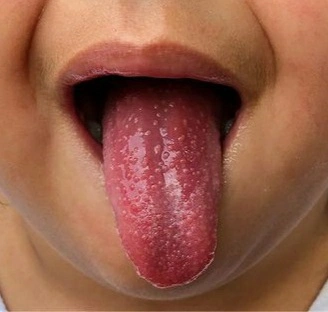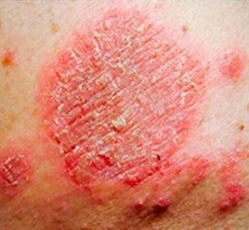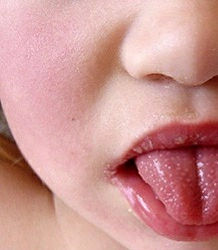Scarlet Fever : Causes, Symptoms and Treatment
◉ What is scarlet fever ?
Scarlet fever is a contagious infection caused by bacteria commonly found in the throat and on the skin : Streptococcus pyogenes (Group A Streptococcus),
It is characterized by a papular rash, swollen, raspberry tongue and flushed cheeks.
Scarlet fever tends to be more common in winter and spring and most often affects children between the ages of 5 and 18, but adults can also be affected.
In most cases, the evolution is favorable, it is easily treated with antibiotics.
◉ How do you get scarlet fever ?
Scarlet fever is highly contagious. Group A streptococci live in the nose and throat and can easily spread to other people through droplets produced by coughing, sneezing, or talking. But also:
- Touch something with contaminated droplets, then touch their mouth or nose
- Drinking from the same glass or eating from the same plate as a person infected with group A streptococcus
- Touching sores or fluid from sores on the skin caused by group A streptococcus (impetigo)
People with scarlet fever can be contagious as soon as the bacteria take hold, 6 days before symptoms appear, and up to 24 hours after taking your first dose of antibiotics (10 to 21 days without treatment).
◉ What are the symptoms of scarlet fever ?
It takes about 2 to 5 days to develop symptoms after exposure to these bacteria.
The first signs of scarlet fever can be flu-like symptoms, including high temperature, sore throat, headache, nausea and vomiting.
-
A rash appears 12 to 48 hours later. It looks like small raised bumps and starts on the neck, armpits and groin and then spreads. It is a whitening papular rash that is classically described as a "sandpaper" rash.
The erythema is often generalized with no area of healthy skin, sparing the palms and soles.
-
A white coating also appears on the tongue (saburral tongue). It peels from the periphery to the center,
leaving the tongue red, swollen and covered with small bumps (called "raspberry tongue").
-
The rash does not appear on the face, but the cheeks may look red.
-
Pale area around the mouth (perioral pallor)
-
Cervical lymph nodes.
- Lines of Pastia: A darkening or redness of normal skin folds, especially in the crook of the arm.

Scarlet fever

Raspberry tongue

“Sandpaper” rash
Note :
- The incubation period can be as short as 1 day and as long as 7 days.
- On darker skin (brown, black), the rash may be harder to spot, although the "sandpaper" feel should be present
◉ Diagnosis of scarlet fever
Your child's doctor will first perform a physical exam to check for signs of scarlet fever, particularly the condition of the tongue, throat and tonsils and the appearance of the rash. .
Diagnostic aids such as the Centor score, rapid strep test and culture can be used to help guide the diagnosis.
◉ Treatment
Most mild cases of scarlet fever go away on their own. But having a cure for the disease speeds up the
healing and reduces the risk of complications. You will also become non-contagious more quickly (it is imperative to follow the treatment until the end.).
Treatment with penicillin V or amoxicillin is preferred, in the patient allergic to penicillin, first generation cephalosporins or a macrolide can be used.
You need to drink plenty of fluids. You can also take paracetamol, soothing gargles to relieve discomfort.
Note: People who are asymptomatic and test positive for group A strep are usually called carriers. Current practice discourages the treatment of carriers with antibiotics.
◉ Prevention
Practicing good hygiene is the best way to prevent scarlet fever. Wash your hands before meals,
after going to the toilet and every time you cough or sneeze. Cover your mouth and nose when sneezing or coughing. Do not share utensils and drinking glasses with others, especially in groups.
The guidelines advise that children should not return to nursery or school, and adults to work, until a minimum of 24 hours after starting antibiotic treatment.
◉ Frequently Asked Questions
Q: Is scarlet fever contagious?
A Yes, the infection can spread even before (2-5 days) a person feels sick
Q: What are the early symptoms of scarlet fever?
A: Early symptoms of scarlet fever often include a sore throat, headache, fever, nausea and vomiting.
Q: Can scarlet fever occur in adults?
A: Anyone can get scarlet fever. But it is more common in children than in adults.
Q: What happens if scarlet fever is left untreated?
A: Complications are rare, but may include kidney, liver or heart damage. You can get an ear, sinus or skin infection, pneumonia or arthritis.
Q: How long can scarlet fever last?
A: Scarlet fever lasts about 1 week. You can pass scarlet fever on to other people up to 6 days before symptoms appear and up to 24 hours after taking your first dose of antibiotics.
Q: Can scarlet fever damage the heart?
A: Damage to the heart valves can begin following a streptococcal infection such as scarlet fever.
Q: Does scarlet fever make you cough?
A: Scarlet fever typically does not cause coughing.



